Yesterday, on the 1st day of the UK& #39;s #COVID19 lockdown, I started posting a daily #deepsea fact on my instagram (@diva_amon) to help amaze/excite/distract. Will cross-post them here also. Feel free to add comments/questions/etc. & I& #39;ll try to get to them #DivasDailyDeepSeaFact
DAY 1: The test used to diagnose #COVID19 & other pandemics was developed with the help of an enzyme isolated from a #microbe found in #DeepSea #HydrothermalVents & freshwater hot springs.
Video: @NERCscience @adrg1.
Fact: @WHOI.
#DivasDailyDeepSeaFact
https://www.whoi.edu/news-insights/content/finding-answers-in-the-ocean/">https://www.whoi.edu/news-insi...
Video: @NERCscience @adrg1.
Fact: @WHOI.
#DivasDailyDeepSeaFact
https://www.whoi.edu/news-insights/content/finding-answers-in-the-ocean/">https://www.whoi.edu/news-insi...
DAY 2: #DeepSea life can be slow. Case in point: the Greenland #shark (Somniosus microcephalus) can live for >400 years & only becomes sexually mature at >150 years old. Yes, it took me a grand total of 2 posts to start talking about sex. I blame @Marahh2o. Video: @oceanexplorer
DAY 3: When we imagine #corals, we see those in tropical waters surrounded by colourful fish & bathed in  https://abs.twimg.com/emoji/v2/... draggable="false" alt="☀️" title="Sun with rays" aria-label="Emoji: Sun with rays"> BUT did you know >2/3 of coral species live in waters that are deep, dark, & cold?! Epic @oceanexplorer
https://abs.twimg.com/emoji/v2/... draggable="false" alt="☀️" title="Sun with rays" aria-label="Emoji: Sun with rays"> BUT did you know >2/3 of coral species live in waters that are deep, dark, & cold?! Epic @oceanexplorer  https://abs.twimg.com/emoji/v2/... draggable="false" alt="🎥" title="Movie camera" aria-label="Emoji: Movie camera"> (sound on): https://oceanexplorer.noaa.gov/okeanos/explorations/ex1708/logs/photolog/welcome.html">https://oceanexplorer.noaa.gov/okeanos/e...
https://abs.twimg.com/emoji/v2/... draggable="false" alt="🎥" title="Movie camera" aria-label="Emoji: Movie camera"> (sound on): https://oceanexplorer.noaa.gov/okeanos/explorations/ex1708/logs/photolog/welcome.html">https://oceanexplorer.noaa.gov/okeanos/e...
#SchoolsOutScience #deepsea
#SchoolsOutScience #deepsea
DAY 4: There are lakes down in the #deepsea! Brine is 3-8x saltier than the surrounding #ocean so it& #39;s much denser and heavier, remaining at the seafloor. This Gulf-of-Mexico brine lake was discovered in 2017. Check out that ripple action & the giant mussels!
 https://abs.twimg.com/emoji/v2/... draggable="false" alt="🎥" title="Movie camera" aria-label="Emoji: Movie camera">: @oceanexplorer
https://abs.twimg.com/emoji/v2/... draggable="false" alt="🎥" title="Movie camera" aria-label="Emoji: Movie camera">: @oceanexplorer
DAY 5: Not only are there lakes in the deep sea, but there are also mountains!There are thought to be ~30,000 - 100,000 #seamounts globally but we can’t be certain because the current maps of the #ocean floor aren’t detailed enough yet!  https://abs.twimg.com/emoji/v2/... draggable="false" alt="📷" title="Camera" aria-label="Emoji: Camera">: @MBARI_News #deepsea
https://abs.twimg.com/emoji/v2/... draggable="false" alt="📷" title="Camera" aria-label="Emoji: Camera">: @MBARI_News #deepsea
DAY 6: 12 people have walked on the moon but only 7 have visited the deepest point in the #oceans. Challenger Deep is <11km away but the #moon is ~384,000km! Of the 19 people, ZERO were women or POC.
Thx for the correction @expeditionlog!
 https://abs.twimg.com/emoji/v2/... draggable="false" alt="📸" title="Camera with flash" aria-label="Emoji: Camera with flash">:Atlantic Productions for @Discovery
https://abs.twimg.com/emoji/v2/... draggable="false" alt="📸" title="Camera with flash" aria-label="Emoji: Camera with flash">:Atlantic Productions for @Discovery
Thx for the correction @expeditionlog!
DAY 7: Some lockdown perspective - A #deepsea #octopus, Graneledone boreopacifica, broods its eggs for 53 months, and during this time she likely never even left them to eat. This is by far the longest known brooding period on Earth!  https://abs.twimg.com/emoji/v2/... draggable="false" alt="🐙" title="Octopus" aria-label="Emoji: Octopus">
https://abs.twimg.com/emoji/v2/... draggable="false" alt="🐙" title="Octopus" aria-label="Emoji: Octopus">
https://journals.plos.org/plosone/article?id=10.1371/journal.pone.0103437
https://journals.plos.org/plosone/a... class="Emoji" style="height:16px;" src=" https://abs.twimg.com/emoji/v2/... draggable="false" alt="📷" title="Camera" aria-label="Emoji: Camera">: @MBARI_News
https://journals.plos.org/plosone/article?id=10.1371/journal.pone.0103437
DAY 8: MOR octopuses! This is a #deepsea #octopus nursery. 2 are known globally - here Davidson #Seamount off California ~3km deep. ~1000 Muusoctopus robustus are sitting in brooding position in shimmering (warmer?) water, which could be used for egg incubation
 https://abs.twimg.com/emoji/v2/... draggable="false" alt="🎥" title="Movie camera" aria-label="Emoji: Movie camera">: @EVNautilus
https://abs.twimg.com/emoji/v2/... draggable="false" alt="🎥" title="Movie camera" aria-label="Emoji: Movie camera">: @EVNautilus
DAY 9: Bioluminescence is the production of light by an organism. ¾ of all marine organisms, excluding microscopic species & those that live on the seafloor, likely do so, & as the #deepsea is so vast, it may be the commonest form of communication on the  https://abs.twimg.com/emoji/v2/... draggable="false" alt="🌎" title="Earth globe americas" aria-label="Emoji: Earth globe americas">!
https://abs.twimg.com/emoji/v2/... draggable="false" alt="🌎" title="Earth globe americas" aria-label="Emoji: Earth globe americas">!  https://abs.twimg.com/emoji/v2/... draggable="false" alt="🎥" title="Movie camera" aria-label="Emoji: Movie camera"> @beroe @mbari_news
https://abs.twimg.com/emoji/v2/... draggable="false" alt="🎥" title="Movie camera" aria-label="Emoji: Movie camera"> @beroe @mbari_news
DAY 10: This is the scaly-foot snail and it is remarkable!
It has:
1) armour made of iron sulphide.
2) the largest heart (relative to body size) in the entire animal kingdom.
3) special microbes within its body that make food using chemicals from the water.
 https://abs.twimg.com/emoji/v2/... draggable="false" alt="📸" title="Camera with flash" aria-label="Emoji: Camera with flash"> by @squamiferum
https://abs.twimg.com/emoji/v2/... draggable="false" alt="📸" title="Camera with flash" aria-label="Emoji: Camera with flash"> by @squamiferum
It has:
1) armour made of iron sulphide.
2) the largest heart (relative to body size) in the entire animal kingdom.
3) special microbes within its body that make food using chemicals from the water.
DAY 11: #Lockdown perspective. Euplectella glass #sponges are intricate structures, which baby shrimp shelter in. Over time, the shrimp grow, becoming too big to leave the sponge. BUT it& #39;s mutualistic. The shrimp clean the sponge while receiving food/protection. https://abs.twimg.com/emoji/v2/... draggable="false" alt="📸" title="Camera with flash" aria-label="Emoji: Camera with flash">: @oceanexplorer
https://abs.twimg.com/emoji/v2/... draggable="false" alt="📸" title="Camera with flash" aria-label="Emoji: Camera with flash">: @oceanexplorer
DAYS 12 & 13: The deep ocean is MASSIVE.
Not only does it cover 65% of the planet& #39;s surface BUT it also extends downwards, providing over 95% of the habitable space on Earth.
And way less than 1% of the deep ocean has ever been seen by human eyes.
 https://abs.twimg.com/emoji/v2/... draggable="false" alt="📷" title="Camera" aria-label="Emoji: Camera">: @oceanexplorer
https://abs.twimg.com/emoji/v2/... draggable="false" alt="📷" title="Camera" aria-label="Emoji: Camera">: @oceanexplorer
Not only does it cover 65% of the planet& #39;s surface BUT it also extends downwards, providing over 95% of the habitable space on Earth.
And way less than 1% of the deep ocean has ever been seen by human eyes.
DAY 14: Asphalt seeps
-Few known
-Petroleum form upside-down droplets that stretch & contort in the currents & near-freezing temperatures
-Form rocks that resemble lava squeezed from tubes
-Chemicals leech from asphalt & power unique communities
 https://abs.twimg.com/emoji/v2/... draggable="false" alt="🎥" title="Movie camera" aria-label="Emoji: Movie camera">: Campeche Knolls by @marum_de
https://abs.twimg.com/emoji/v2/... draggable="false" alt="🎥" title="Movie camera" aria-label="Emoji: Movie camera">: Campeche Knolls by @marum_de
-Few known
-Petroleum form upside-down droplets that stretch & contort in the currents & near-freezing temperatures
-Form rocks that resemble lava squeezed from tubes
-Chemicals leech from asphalt & power unique communities
DAY 15: Greenland #sharks (DAY 2) have got nothing on #deepsea #corals! A Leoipathes black coral was aged at >4200 yrs old! In 0 AD, that coral would already have been >2000 yrs old! Few deep-sea corals have been aged so there are likely many that are much older
 https://abs.twimg.com/emoji/v2/... draggable="false" alt="🎥" title="Movie camera" aria-label="Emoji: Movie camera">: @oceanexplorer
https://abs.twimg.com/emoji/v2/... draggable="false" alt="🎥" title="Movie camera" aria-label="Emoji: Movie camera">: @oceanexplorer
DAY 16: The #deepsea is unfairly labelled & #39;scary& #39;, but in the depths, over-the-top cuteness exists too! This is the Stubby Squid (Rossia pacifica) & it has ridiculous googly eyes. It burrows into the sediment to camouflage, leaving the  https://abs.twimg.com/emoji/v2/... draggable="false" alt="👀" title="Eyes" aria-label="Emoji: Eyes"> poking out to spot prey.
https://abs.twimg.com/emoji/v2/... draggable="false" alt="👀" title="Eyes" aria-label="Emoji: Eyes"> poking out to spot prey.
 https://abs.twimg.com/emoji/v2/... draggable="false" alt="📷" title="Camera" aria-label="Emoji: Camera"> @EVNautilus
https://abs.twimg.com/emoji/v2/... draggable="false" alt="📷" title="Camera" aria-label="Emoji: Camera"> @EVNautilus
DAY 17: Anglerfish loving: a #deepsea #socialdistanching fail!
In the deep sea, it can be difficult to find a mate so male anglerfish have large eyes & huge nostrils to help. When a lucky male finds a lady...1/n
 https://abs.twimg.com/emoji/v2/... draggable="false" alt="🎥" title="Movie camera" aria-label="Emoji: Movie camera">: @LULA1000_FRN @ScienceMagazine @pgirguis
https://abs.twimg.com/emoji/v2/... draggable="false" alt="🎥" title="Movie camera" aria-label="Emoji: Movie camera">: @LULA1000_FRN @ScienceMagazine @pgirguis
In the deep sea, it can be difficult to find a mate so male anglerfish have large eyes & huge nostrils to help. When a lucky male finds a lady...1/n
..he is so taken by her amazing scent, gorgeous looks & overwhelming charisma, that he bites her. This biting triggers a hormonal reaction that causes his lips to fuse to her side and his organs to dissolve while his circulatory system fuses with hers. 2/n
Eventually, he becomes nothing more than the female& #39;s dangling testis. He gives her sperm, & she gives him everything he needs to stay alive, alleviating the problem of having to find a mate every time the female is ready to reproduce. Can you spot the male in the video above?
DAY 18: Food in the #deepsea is limited, mostly coming from the sea surface as dead plankton. Sometimes a larger chunk of food enters the depths prompting a feeding frenzy. This #swordfish carcass was a rare sight esp as it wasn’t the only thing being eaten!  https://abs.twimg.com/emoji/v2/... draggable="false" alt="🎥" title="Movie camera" aria-label="Emoji: Movie camera">: @oceanexplorer
https://abs.twimg.com/emoji/v2/... draggable="false" alt="🎥" title="Movie camera" aria-label="Emoji: Movie camera">: @oceanexplorer
DAY 19: #Rabbit fish
• #deepsea #EasterBunny?
• aka #chimera or ghost #shark
• close relative of sharks
• occurs only in deep sea globally
• venomous spine in front of dorsal fin for defence
• dots on the snout & big eyes to detect prey in dark deep sea
 https://abs.twimg.com/emoji/v2/... draggable="false" alt="🎥" title="Movie camera" aria-label="Emoji: Movie camera"> @noaaexploration
https://abs.twimg.com/emoji/v2/... draggable="false" alt="🎥" title="Movie camera" aria-label="Emoji: Movie camera"> @noaaexploration
• #deepsea #EasterBunny?
• aka #chimera or ghost #shark
• close relative of sharks
• occurs only in deep sea globally
• venomous spine in front of dorsal fin for defence
• dots on the snout & big eyes to detect prey in dark deep sea
DAY 20:
Hoping you have an Eggcellent Easter!
A #deepsea scene reminiscent of many homes today! An Atlantic red https://abs.twimg.com/emoji/v2/... draggable="false" alt="🦀" title="Crab" aria-label="Emoji: Crab">(Chaceon quinquedens) gorging on the eggs of a pallid sculpin, plus amphipods, like ants at a picnic, capitalising on the sloppy feeding!
https://abs.twimg.com/emoji/v2/... draggable="false" alt="🦀" title="Crab" aria-label="Emoji: Crab">(Chaceon quinquedens) gorging on the eggs of a pallid sculpin, plus amphipods, like ants at a picnic, capitalising on the sloppy feeding!
 https://abs.twimg.com/emoji/v2/... draggable="false" alt="🎥" title="Movie camera" aria-label="Emoji: Movie camera">: @oceanexplorer
https://abs.twimg.com/emoji/v2/... draggable="false" alt="🎥" title="Movie camera" aria-label="Emoji: Movie camera">: @oceanexplorer
Hoping you have an Eggcellent Easter!
A #deepsea scene reminiscent of many homes today! An Atlantic red
DAY 21: BEHOLD, Deepstaria enigmatica! It’s one of the largest & most mysterious jellyfish. It lacks tentacles, so feeds by encapsulating its prey within its entire gelatinous delicate umbrella. & what are those net-like markings? They’re it’s digestive tract!  https://abs.twimg.com/emoji/v2/... draggable="false" alt="🤯" title="Exploding head" aria-label="Emoji: Exploding head">
https://abs.twimg.com/emoji/v2/... draggable="false" alt="🤯" title="Exploding head" aria-label="Emoji: Exploding head">  https://abs.twimg.com/emoji/v2/... draggable="false" alt="🎥" title="Movie camera" aria-label="Emoji: Movie camera">: @EVNautilus
https://abs.twimg.com/emoji/v2/... draggable="false" alt="🎥" title="Movie camera" aria-label="Emoji: Movie camera">: @EVNautilus
DAY 22: Scientists suspect these gouges at 4153m in Pacific were made by beaked whales! If true, it would extend the deepest dive of any whale by >1.2 km! A reminder that the #deepsea is connected to the sea surface & there are animals able to use all of it!
 https://abs.twimg.com/emoji/v2/... draggable="false" alt="📷" title="Camera" aria-label="Emoji: Camera">: Marsh et al 2018
https://abs.twimg.com/emoji/v2/... draggable="false" alt="📷" title="Camera" aria-label="Emoji: Camera">: Marsh et al 2018
DAY 23: This #deepsea #whalefall was found at 3238m off California. It appears to be between the mobile-scavenger stage & the enrichment-opportunist stage as large scavengers are stripping the skeleton of soft tissue, but Osedax worms are also consuming the bones.  https://abs.twimg.com/emoji/v2/... draggable="false" alt="🎥" title="Movie camera" aria-label="Emoji: Movie camera">: @EVNautilus
https://abs.twimg.com/emoji/v2/... draggable="false" alt="🎥" title="Movie camera" aria-label="Emoji: Movie camera">: @EVNautilus
DAY 24: Osedax worms
-AKA bone-eating zombie worm or mucus snotflower worm
-live on exposed skeletons of dead whales ( #whalefall), & big animals
-no gut or mouth
-FASCINATING reproduction- Pic=female. Males=tiny blobs of sperm that hook onto females.
 https://abs.twimg.com/emoji/v2/... draggable="false" alt="📷" title="Camera" aria-label="Emoji: Camera">: Glover et al 2005
https://abs.twimg.com/emoji/v2/... draggable="false" alt="📷" title="Camera" aria-label="Emoji: Camera">: Glover et al 2005
1/2
-AKA bone-eating zombie worm or mucus snotflower worm
-live on exposed skeletons of dead whales ( #whalefall), & big animals
-no gut or mouth
-FASCINATING reproduction- Pic=female. Males=tiny blobs of sperm that hook onto females.
1/2
- Female Osedax =male magnets! 1 female can have hundreds of males. #harem
-Larger (older?) ladies have more males.
-Sex of Osedax larva determined by what it settles on. if settles on bone, turns into female. If settles on female, turns into male.
-Osedax= #deepsea genius?
2/2
-Larger (older?) ladies have more males.
-Sex of Osedax larva determined by what it settles on. if settles on bone, turns into female. If settles on female, turns into male.
-Osedax= #deepsea genius?
2/2
DAY 25: This was the 1st time an ind. of the Aphyonidae was seen alive. Many #deepsea species were described from mangled trawl samples, giving false impressions of how they look & providing little info on behaviour. This @oceanexplorer  https://abs.twimg.com/emoji/v2/... draggable="false" alt="🎥" title="Movie camera" aria-label="Emoji: Movie camera"> suggests these fish are bottom-dwellers
https://abs.twimg.com/emoji/v2/... draggable="false" alt="🎥" title="Movie camera" aria-label="Emoji: Movie camera"> suggests these fish are bottom-dwellers
DAY 26: In the #deepsea, the masses, e.g. Enypniastes eximia AKA the headless chicken monster, feed on #marinesnow. This cuke lives on seafloor but can also swim to move more quickly. Hilariously, they sometimes  https://abs.twimg.com/emoji/v2/... draggable="false" alt="💩" title="Pile of poo" aria-label="Emoji: Pile of poo"> just before lift off- shedding weight maybe?
https://abs.twimg.com/emoji/v2/... draggable="false" alt="💩" title="Pile of poo" aria-label="Emoji: Pile of poo"> just before lift off- shedding weight maybe?
 https://abs.twimg.com/emoji/v2/... draggable="false" alt="🎥" title="Movie camera" aria-label="Emoji: Movie camera">: @oceanexplorer
https://abs.twimg.com/emoji/v2/... draggable="false" alt="🎥" title="Movie camera" aria-label="Emoji: Movie camera">: @oceanexplorer
DAY 27: Hands up if you knew the deep sea is home to the oldest animal ever aged! Monorhaphis chuni, a glass sponge, forms giant spicules that can reach 3m. Those massive spicules take ~11,000 yrs & are the largest silica structures made by an animal on  https://abs.twimg.com/emoji/v2/... draggable="false" alt="🌎" title="Earth globe americas" aria-label="Emoji: Earth globe americas">.
https://abs.twimg.com/emoji/v2/... draggable="false" alt="🌎" title="Earth globe americas" aria-label="Emoji: Earth globe americas">.
 https://abs.twimg.com/emoji/v2/... draggable="false" alt="📷" title="Camera" aria-label="Emoji: Camera">: @oceanexplorer
https://abs.twimg.com/emoji/v2/... draggable="false" alt="📷" title="Camera" aria-label="Emoji: Camera">: @oceanexplorer
DAY 28: No, this isn’t a sponge or coral. This #deepsea dweller is A SINGLE CELL, but instead of being microscopic, it is the size of a watermelon! The tests made by xenophyophores, giant deep-sea protists, are the largest structures created by a single cell  https://abs.twimg.com/emoji/v2/... draggable="false" alt="🤯" title="Exploding head" aria-label="Emoji: Exploding head">
https://abs.twimg.com/emoji/v2/... draggable="false" alt="🤯" title="Exploding head" aria-label="Emoji: Exploding head"> https://abs.twimg.com/emoji/v2/... draggable="false" alt="📷" title="Camera" aria-label="Emoji: Camera">: @oceanexplorer
https://abs.twimg.com/emoji/v2/... draggable="false" alt="📷" title="Camera" aria-label="Emoji: Camera">: @oceanexplorer
DAY 29: Not a fact but a plug! TODAY @oceanexplorer will be re-streaming 1 of best dives EVER from 2016 Marianas expedition. Feat. a 10-story hydrothermal vent with 339°C fluids, a snail graveyard, incredible species, & melodious voices of @scourgeseas & I https://oceanexplorer.noaa.gov/livestreams/rebroadcast-april212020.html">https://oceanexplorer.noaa.gov/livestrea...
DAY 30: A healthy #deepsea —> a healthy #ocean —> a resilient #planet  https://abs.twimg.com/emoji/v2/... draggable="false" alt="🌎" title="Earth globe americas" aria-label="Emoji: Earth globe americas">
https://abs.twimg.com/emoji/v2/... draggable="false" alt="🌎" title="Earth globe americas" aria-label="Emoji: Earth globe americas">
The deep sea
-provides >90% habitable space
-is a vast biodiversity repository
-contributes to planetary functions eg climate regulation
-needs better understanding/management
#EarthDay https://abs.twimg.com/hashflags... draggable="false" alt="">
https://abs.twimg.com/hashflags... draggable="false" alt="">  https://abs.twimg.com/emoji/v2/... draggable="false" alt="🎥" title="Movie camera" aria-label="Emoji: Movie camera">: @oceanexplorer
https://abs.twimg.com/emoji/v2/... draggable="false" alt="🎥" title="Movie camera" aria-label="Emoji: Movie camera">: @oceanexplorer
The deep sea
-provides >90% habitable space
-is a vast biodiversity repository
-contributes to planetary functions eg climate regulation
-needs better understanding/management
#EarthDay
DAY 31: If you& #39;ve been living under a rock for 2 weeks, a cruise studying Ningaloo Canyons #deepsea off W. Australia, came across THE LONGEST ANIMAL EVER! Recorded at ~600m, this beautiful siphonophore, Apolemia, is 45m long & is actually a colony of many zooids
 https://abs.twimg.com/emoji/v2/... draggable="false" alt="🎥" title="Movie camera" aria-label="Emoji: Movie camera">: @SchmidtOcean
https://abs.twimg.com/emoji/v2/... draggable="false" alt="🎥" title="Movie camera" aria-label="Emoji: Movie camera">: @SchmidtOcean
DAY 32: The cookiecutter #shark (Isistius brasiliensis)
-named for perfect 5cm bites on large victims
-leaves wound but doesnt kill
-attacks common: most Hawaii adult spinner dolphins have scars & fish in Honolulu Fish Auction bitten ( https://abs.twimg.com/emoji/v2/... draggable="false" alt="📷" title="Camera" aria-label="Emoji: Camera">: pomfret)
https://abs.twimg.com/emoji/v2/... draggable="false" alt="📷" title="Camera" aria-label="Emoji: Camera">: pomfret)
-migrates to/from #deepsea daily
-named for perfect 5cm bites on large victims
-leaves wound but doesnt kill
-attacks common: most Hawaii adult spinner dolphins have scars & fish in Honolulu Fish Auction bitten (
-migrates to/from #deepsea daily
DAY 33: This is the adorable Flapjack Octopus (Opisthoteuthis californiana), a dumbo octopus (or cirrate octopus) named for fins on head. Seen off California, it swims using its fins, pulsing its webbed arms, & pushing water through its funnel.
Cute level: 13/10
 https://abs.twimg.com/emoji/v2/... draggable="false" alt="🎥" title="Movie camera" aria-label="Emoji: Movie camera">: @EVNautilus
https://abs.twimg.com/emoji/v2/... draggable="false" alt="🎥" title="Movie camera" aria-label="Emoji: Movie camera">: @EVNautilus
Cute level: 13/10
DAY 34: Research at  https://abs.twimg.com/emoji/v2/... draggable="false" alt="🌎" title="Earth globe americas" aria-label="Emoji: Earth globe americas">’s deepest hydrothermal vents, Beebe Vents, has focused on the superhot chimneys (DAY 1), the periphery is fascinating too. There are thick white bacterial mats, anemones, shrimp & ophiuroids, most undescribed. Discovered in 2010 at 4987m.
https://abs.twimg.com/emoji/v2/... draggable="false" alt="🌎" title="Earth globe americas" aria-label="Emoji: Earth globe americas">’s deepest hydrothermal vents, Beebe Vents, has focused on the superhot chimneys (DAY 1), the periphery is fascinating too. There are thick white bacterial mats, anemones, shrimp & ophiuroids, most undescribed. Discovered in 2010 at 4987m.  https://abs.twimg.com/emoji/v2/... draggable="false" alt="🎥" title="Movie camera" aria-label="Emoji: Movie camera">: @NERCscience
https://abs.twimg.com/emoji/v2/... draggable="false" alt="🎥" title="Movie camera" aria-label="Emoji: Movie camera">: @NERCscience
DAY 35: If the #deepsea is dark, why are many animals red? Red, the longest wavelength, is quickly filtered from water as depth increases, disappearing <100m. So red animals, e.g.  https://abs.twimg.com/emoji/v2/... draggable="false" alt="🦑" title="Squid" aria-label="Emoji: Squid"> Discoteuthis discus, appear invisible as there is no red light to reflect.
https://abs.twimg.com/emoji/v2/... draggable="false" alt="🦑" title="Squid" aria-label="Emoji: Squid"> Discoteuthis discus, appear invisible as there is no red light to reflect.
 https://abs.twimg.com/emoji/v2/... draggable="false" alt="🎥" title="Movie camera" aria-label="Emoji: Movie camera">: @oceanexplorer
https://abs.twimg.com/emoji/v2/... draggable="false" alt="🎥" title="Movie camera" aria-label="Emoji: Movie camera">: @oceanexplorer
DAY 36: Fish in the #deepsea migrate! New study correlated fish movements with surface plankton abundance, which varies seasonally. #Fish abundance increased quickly & consistently, suggesting this was a behavioral pattern.
https://besjournals.onlinelibrary.wiley.com/doi/abs/10.1111/1365-2656.13215
https://besjournals.onlinelibrary.wiley.com/doi/abs/1... class="Emoji" style="height:16px;" src=" https://abs.twimg.com/emoji/v2/... draggable="false" alt="📷" title="Camera" aria-label="Emoji: Camera">: Craig Smith & Diva Amon
https://besjournals.onlinelibrary.wiley.com/doi/abs/10.1111/1365-2656.13215
DAY 37: Catsharks (C. cephalus) & cusk eels (C. emmelas) live in #deepsea waters almost w/out oxygen @ 600-900 m off California. O2 concs were <1% of surface water & many times < critical oxygen limits of most hypoxia-tolerant fishes known https://abs.twimg.com/emoji/v2/... draggable="false" alt="🎥" title="Movie camera" aria-label="Emoji: Movie camera">: @MBARI_News @LlevinAnn @Scripps_Ocean
https://abs.twimg.com/emoji/v2/... draggable="false" alt="🎥" title="Movie camera" aria-label="Emoji: Movie camera">: @MBARI_News @LlevinAnn @Scripps_Ocean
DAY 38: Big fish we tend to associate with the sea surface inhabit the #deepsea too! The swordfish (X. gladius) was seen feeding at 530m depth in the Gulf of Mexico but can get to >2km. It’s using the sword/bill to side-swipe its prey as never used for stabbing  https://abs.twimg.com/emoji/v2/... draggable="false" alt="🎥" title="Movie camera" aria-label="Emoji: Movie camera">: @oceanexplorer
https://abs.twimg.com/emoji/v2/... draggable="false" alt="🎥" title="Movie camera" aria-label="Emoji: Movie camera">: @oceanexplorer
DAY 39: On #deepsea swordfish: in 1967, the Alvin sub was at 610m off FL when pilots heard a bang. Out porthole, they saw a large fish thrashing about. After aborting dive, they found an 8-foot swordfish wedged below porthole. Took 2hrs to remove but fed entire crew!
 https://abs.twimg.com/emoji/v2/... draggable="false" alt="📷" title="Camera" aria-label="Emoji: Camera">: @WHOI
https://abs.twimg.com/emoji/v2/... draggable="false" alt="📷" title="Camera" aria-label="Emoji: Camera">: @WHOI
DAY 40: The #deepsea is such a difficult place to work that even large animals go unnoticed. This is the largest known #sponge spotted in 2015 at 2117m in Papahānaumokuākea Marine National Monument. It’s >3.5x2.0x1.5m, a new Rosellidae species & millenia old!  https://abs.twimg.com/emoji/v2/... draggable="false" alt="🎥" title="Movie camera" aria-label="Emoji: Movie camera">: @oceanexplorer
https://abs.twimg.com/emoji/v2/... draggable="false" alt="🎥" title="Movie camera" aria-label="Emoji: Movie camera">: @oceanexplorer
DAY 41: The Atolla jellyfish is deep red but most #deepsea animals only see this https://abs.twimg.com/emoji/v2/... draggable="false" alt="👇🏽" title="Down pointing backhand index (medium skin tone)" aria-label="Emoji: Down pointing backhand index (medium skin tone)">bioluminescent display. It’s not used to scare off predators or lure prey....When attacked, it uses as burglar alarm to draw in predators more interested in the attacker than itself!
https://abs.twimg.com/emoji/v2/... draggable="false" alt="👇🏽" title="Down pointing backhand index (medium skin tone)" aria-label="Emoji: Down pointing backhand index (medium skin tone)">bioluminescent display. It’s not used to scare off predators or lure prey....When attacked, it uses as burglar alarm to draw in predators more interested in the attacker than itself!  https://abs.twimg.com/emoji/v2/... draggable="false" alt="🎥" title="Movie camera" aria-label="Emoji: Movie camera">: @MBARI_News
https://abs.twimg.com/emoji/v2/... draggable="false" alt="🎥" title="Movie camera" aria-label="Emoji: Movie camera">: @MBARI_News
DAY 42: This was 1st sighting of Pseudoliparis swirei, the deepest fish known! Seen in 2014 @ 8143m in Mariana Trench, it’s since been spotted @ 8178m by @JAMSTEC_PR. The likely-trench-endemic snailfish is 2x length of cigar, translucent & scaleless
 https://abs.twimg.com/emoji/v2/... draggable="false" alt="🎥" title="Movie camera" aria-label="Emoji: Movie camera">: @seagrifo @SchmidtOcean
https://abs.twimg.com/emoji/v2/... draggable="false" alt="🎥" title="Movie camera" aria-label="Emoji: Movie camera">: @seagrifo @SchmidtOcean
DAY 43: Scientists sampling xenophyophores at 2000m off Costa Rica in 2019 discovered #deepsea snailfish eggs nestled within the intricate structures. Snailfish often store their eggs into other animals: glass sponges, coral stalks & even crab gills!
 https://abs.twimg.com/emoji/v2/... draggable="false" alt="📷" title="Camera" aria-label="Emoji: Camera">: @LlevinAnn & G Rouse
https://abs.twimg.com/emoji/v2/... draggable="false" alt="📷" title="Camera" aria-label="Emoji: Camera">: @LlevinAnn & G Rouse
DAY 44: Dumbo/finned/cirrate octopus occur in #deepsea down to >5000m, while incirrate/finless are shallower. In 2016, scientists stumbled upon Casper ( https://abs.twimg.com/emoji/v2/... draggable="false" alt="👻" title="Ghost" aria-label="Emoji: Ghost"> nickname), a new species & genus, that sets depth record for finless
https://abs.twimg.com/emoji/v2/... draggable="false" alt="👻" title="Ghost" aria-label="Emoji: Ghost"> nickname), a new species & genus, that sets depth record for finless  https://abs.twimg.com/emoji/v2/... draggable="false" alt="🐙" title="Octopus" aria-label="Emoji: Octopus"> @ 4290m & proves they’re ADORABLE!
https://abs.twimg.com/emoji/v2/... draggable="false" alt="🐙" title="Octopus" aria-label="Emoji: Octopus"> @ 4290m & proves they’re ADORABLE!  https://abs.twimg.com/emoji/v2/... draggable="false" alt="🎥" title="Movie camera" aria-label="Emoji: Movie camera">: @oceanexplorer
https://abs.twimg.com/emoji/v2/... draggable="false" alt="🎥" title="Movie camera" aria-label="Emoji: Movie camera">: @oceanexplorer
DAY 45: Meet Swima bombiviridis! This #deepsea worm is mostly peaceful, but if disturbed, it& #39;ll drop bombs! You might spot the small green sacs just behind its head. When disturbed, these are released, glowing green, distracting the predator & allowing escape.
 https://abs.twimg.com/emoji/v2/... draggable="false" alt="🎥" title="Movie camera" aria-label="Emoji: Movie camera">: @MBARI_News
https://abs.twimg.com/emoji/v2/... draggable="false" alt="🎥" title="Movie camera" aria-label="Emoji: Movie camera">: @MBARI_News
DAY 46: This Crossota hydromedusa was seen @ 3700m in the Marianas. Apart from being amazing, it’s likely a new species but as we didn’t collect, it remains a mystery of the deep! Long tentacles extended outward & motionless = ambush position. Yellow = gonads.  https://abs.twimg.com/emoji/v2/... draggable="false" alt="🎥" title="Movie camera" aria-label="Emoji: Movie camera">: @oceanexplorer
https://abs.twimg.com/emoji/v2/... draggable="false" alt="🎥" title="Movie camera" aria-label="Emoji: Movie camera">: @oceanexplorer
DAY 47: Using timelapse  https://abs.twimg.com/emoji/v2/... draggable="false" alt="📷" title="Camera" aria-label="Emoji: Camera"> >4000m off California, scientists saw a glass #sponge expanding & contracting. Freshwater sponges do similar over ~40mins, but in deep sea, a single cycle took hrs to weeks. The #deepsea is dynamic but operates at a slower pace than us!
https://abs.twimg.com/emoji/v2/... draggable="false" alt="📷" title="Camera" aria-label="Emoji: Camera"> >4000m off California, scientists saw a glass #sponge expanding & contracting. Freshwater sponges do similar over ~40mins, but in deep sea, a single cycle took hrs to weeks. The #deepsea is dynamic but operates at a slower pace than us!  https://abs.twimg.com/emoji/v2/... draggable="false" alt="🎥" title="Movie camera" aria-label="Emoji: Movie camera">: @MBARI_News
https://abs.twimg.com/emoji/v2/... draggable="false" alt="🎥" title="Movie camera" aria-label="Emoji: Movie camera">: @MBARI_News
DAY 48: Giant isopods, Bathynomus giganteus, are excellent mums. They raise their young from babies all the way to near-perfectly formed adults in a brood pouch or marsupium. #HappyMothersDay  https://abs.twimg.com/hashflags... draggable="false" alt=""> to all! For more #deepsea mums, check out Days 7 & 8 in the series.
https://abs.twimg.com/hashflags... draggable="false" alt=""> to all! For more #deepsea mums, check out Days 7 & 8 in the series.  https://abs.twimg.com/emoji/v2/... draggable="false" alt="🎥" title="Movie camera" aria-label="Emoji: Movie camera">: @oceanexplorer
https://abs.twimg.com/emoji/v2/... draggable="false" alt="🎥" title="Movie camera" aria-label="Emoji: Movie camera">: @oceanexplorer

 Read on Twitter
Read on Twitter : @MBARI_News #deepsea" title="DAY 5: Not only are there lakes in the deep sea, but there are also mountains!There are thought to be ~30,000 - 100,000 #seamounts globally but we can’t be certain because the current maps of the #ocean floor aren’t detailed enough yet! https://abs.twimg.com/emoji/v2/... draggable="false" alt="📷" title="Camera" aria-label="Emoji: Camera">: @MBARI_News #deepsea" class="img-responsive" style="max-width:100%;"/>
: @MBARI_News #deepsea" title="DAY 5: Not only are there lakes in the deep sea, but there are also mountains!There are thought to be ~30,000 - 100,000 #seamounts globally but we can’t be certain because the current maps of the #ocean floor aren’t detailed enough yet! https://abs.twimg.com/emoji/v2/... draggable="false" alt="📷" title="Camera" aria-label="Emoji: Camera">: @MBARI_News #deepsea" class="img-responsive" style="max-width:100%;"/>
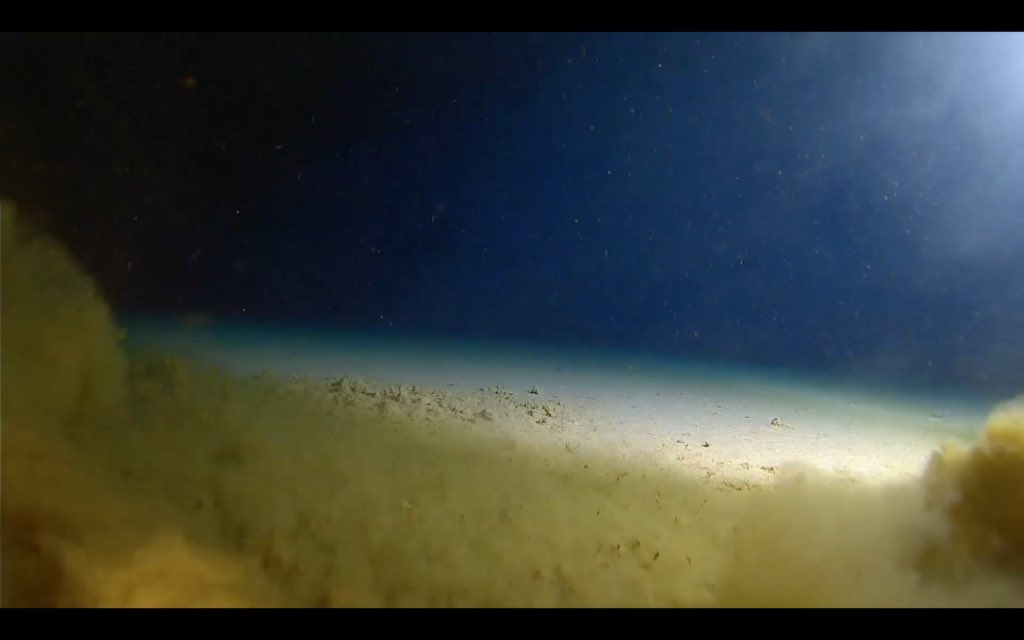 :Atlantic Productions for @Discovery" title="DAY 6: 12 people have walked on the moon but only 7 have visited the deepest point in the #oceans. Challenger Deep is <11km away but the #moon is ~384,000km! Of the 19 people, ZERO were women or POC. Thx for the correction @expeditionlog!https://abs.twimg.com/emoji/v2/... draggable="false" alt="📸" title="Camera with flash" aria-label="Emoji: Camera with flash">:Atlantic Productions for @Discovery" class="img-responsive" style="max-width:100%;"/>
:Atlantic Productions for @Discovery" title="DAY 6: 12 people have walked on the moon but only 7 have visited the deepest point in the #oceans. Challenger Deep is <11km away but the #moon is ~384,000km! Of the 19 people, ZERO were women or POC. Thx for the correction @expeditionlog!https://abs.twimg.com/emoji/v2/... draggable="false" alt="📸" title="Camera with flash" aria-label="Emoji: Camera with flash">:Atlantic Productions for @Discovery" class="img-responsive" style="max-width:100%;"/>
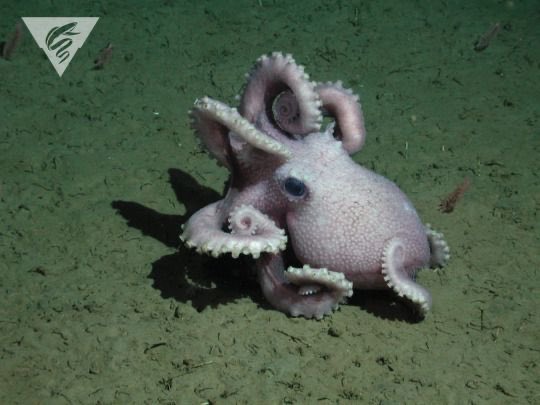 https://journals.plos.org/plosone/a... class="Emoji" style="height:16px;" src=" " title="DAY 7: Some lockdown perspective - A #deepsea #octopus, Graneledone boreopacifica, broods its eggs for 53 months, and during this time she likely never even left them to eat. This is by far the longest known brooding period on Earth! https://abs.twimg.com/emoji/v2/... draggable="false" alt="🐙" title="Octopus" aria-label="Emoji: Octopus"> https://journals.plos.org/plosone/a... class="Emoji" style="height:16px;" src=" " class="img-responsive" style="max-width:100%;"/>
https://journals.plos.org/plosone/a... class="Emoji" style="height:16px;" src=" " title="DAY 7: Some lockdown perspective - A #deepsea #octopus, Graneledone boreopacifica, broods its eggs for 53 months, and during this time she likely never even left them to eat. This is by far the longest known brooding period on Earth! https://abs.twimg.com/emoji/v2/... draggable="false" alt="🐙" title="Octopus" aria-label="Emoji: Octopus"> https://journals.plos.org/plosone/a... class="Emoji" style="height:16px;" src=" " class="img-responsive" style="max-width:100%;"/>
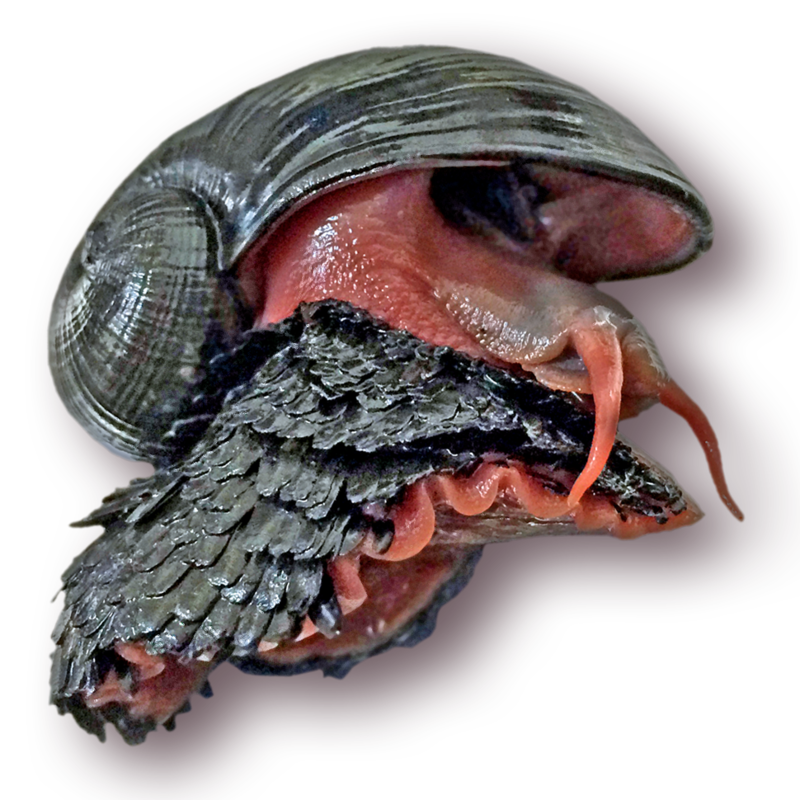 by @squamiferum" title="DAY 10: This is the scaly-foot snail and it is remarkable!It has:1) armour made of iron sulphide.2) the largest heart (relative to body size) in the entire animal kingdom.3) special microbes within its body that make food using chemicals from the water.https://abs.twimg.com/emoji/v2/... draggable="false" alt="📸" title="Camera with flash" aria-label="Emoji: Camera with flash"> by @squamiferum" class="img-responsive" style="max-width:100%;"/>
by @squamiferum" title="DAY 10: This is the scaly-foot snail and it is remarkable!It has:1) armour made of iron sulphide.2) the largest heart (relative to body size) in the entire animal kingdom.3) special microbes within its body that make food using chemicals from the water.https://abs.twimg.com/emoji/v2/... draggable="false" alt="📸" title="Camera with flash" aria-label="Emoji: Camera with flash"> by @squamiferum" class="img-responsive" style="max-width:100%;"/>
 : @oceanexplorer" title="DAY 11: #Lockdown perspective. Euplectella glass #sponges are intricate structures, which baby shrimp shelter in. Over time, the shrimp grow, becoming too big to leave the sponge. BUT it& #39;s mutualistic. The shrimp clean the sponge while receiving food/protection.https://abs.twimg.com/emoji/v2/... draggable="false" alt="📸" title="Camera with flash" aria-label="Emoji: Camera with flash">: @oceanexplorer" class="img-responsive" style="max-width:100%;"/>
: @oceanexplorer" title="DAY 11: #Lockdown perspective. Euplectella glass #sponges are intricate structures, which baby shrimp shelter in. Over time, the shrimp grow, becoming too big to leave the sponge. BUT it& #39;s mutualistic. The shrimp clean the sponge while receiving food/protection.https://abs.twimg.com/emoji/v2/... draggable="false" alt="📸" title="Camera with flash" aria-label="Emoji: Camera with flash">: @oceanexplorer" class="img-responsive" style="max-width:100%;"/>
 : @oceanexplorer" title="DAYS 12 & 13: The deep ocean is MASSIVE. Not only does it cover 65% of the planet& #39;s surface BUT it also extends downwards, providing over 95% of the habitable space on Earth. And way less than 1% of the deep ocean has ever been seen by human eyes. https://abs.twimg.com/emoji/v2/... draggable="false" alt="📷" title="Camera" aria-label="Emoji: Camera">: @oceanexplorer" class="img-responsive" style="max-width:100%;"/>
: @oceanexplorer" title="DAYS 12 & 13: The deep ocean is MASSIVE. Not only does it cover 65% of the planet& #39;s surface BUT it also extends downwards, providing over 95% of the habitable space on Earth. And way less than 1% of the deep ocean has ever been seen by human eyes. https://abs.twimg.com/emoji/v2/... draggable="false" alt="📷" title="Camera" aria-label="Emoji: Camera">: @oceanexplorer" class="img-responsive" style="max-width:100%;"/>
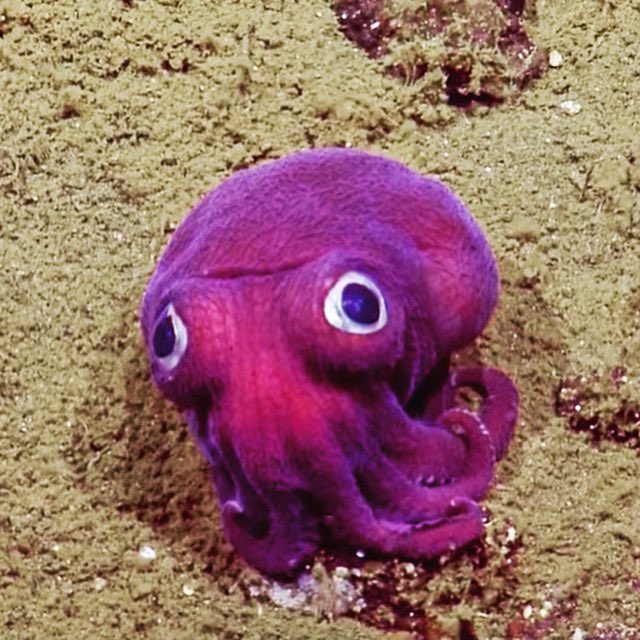 poking out to spot prey. https://abs.twimg.com/emoji/v2/... draggable="false" alt="📷" title="Camera" aria-label="Emoji: Camera"> @EVNautilus" title="DAY 16: The #deepsea is unfairly labelled & #39;scary& #39;, but in the depths, over-the-top cuteness exists too! This is the Stubby Squid (Rossia pacifica) & it has ridiculous googly eyes. It burrows into the sediment to camouflage, leaving the https://abs.twimg.com/emoji/v2/... draggable="false" alt="👀" title="Eyes" aria-label="Emoji: Eyes"> poking out to spot prey. https://abs.twimg.com/emoji/v2/... draggable="false" alt="📷" title="Camera" aria-label="Emoji: Camera"> @EVNautilus" class="img-responsive" style="max-width:100%;"/>
poking out to spot prey. https://abs.twimg.com/emoji/v2/... draggable="false" alt="📷" title="Camera" aria-label="Emoji: Camera"> @EVNautilus" title="DAY 16: The #deepsea is unfairly labelled & #39;scary& #39;, but in the depths, over-the-top cuteness exists too! This is the Stubby Squid (Rossia pacifica) & it has ridiculous googly eyes. It burrows into the sediment to camouflage, leaving the https://abs.twimg.com/emoji/v2/... draggable="false" alt="👀" title="Eyes" aria-label="Emoji: Eyes"> poking out to spot prey. https://abs.twimg.com/emoji/v2/... draggable="false" alt="📷" title="Camera" aria-label="Emoji: Camera"> @EVNautilus" class="img-responsive" style="max-width:100%;"/>
 : Marsh et al 2018" title="DAY 22: Scientists suspect these gouges at 4153m in Pacific were made by beaked whales! If true, it would extend the deepest dive of any whale by >1.2 km! A reminder that the #deepsea is connected to the sea surface & there are animals able to use all of it! https://abs.twimg.com/emoji/v2/... draggable="false" alt="📷" title="Camera" aria-label="Emoji: Camera">: Marsh et al 2018" class="img-responsive" style="max-width:100%;"/>
: Marsh et al 2018" title="DAY 22: Scientists suspect these gouges at 4153m in Pacific were made by beaked whales! If true, it would extend the deepest dive of any whale by >1.2 km! A reminder that the #deepsea is connected to the sea surface & there are animals able to use all of it! https://abs.twimg.com/emoji/v2/... draggable="false" alt="📷" title="Camera" aria-label="Emoji: Camera">: Marsh et al 2018" class="img-responsive" style="max-width:100%;"/>
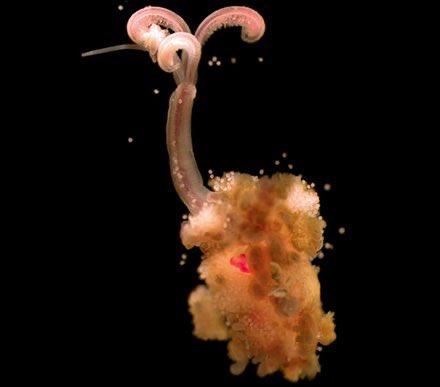 : Glover et al 20051/2" title="DAY 24: Osedax worms-AKA bone-eating zombie worm or mucus snotflower worm-live on exposed skeletons of dead whales ( #whalefall), & big animals-no gut or mouth-FASCINATING reproduction- Pic=female. Males=tiny blobs of sperm that hook onto females.https://abs.twimg.com/emoji/v2/... draggable="false" alt="📷" title="Camera" aria-label="Emoji: Camera">: Glover et al 20051/2" class="img-responsive" style="max-width:100%;"/>
: Glover et al 20051/2" title="DAY 24: Osedax worms-AKA bone-eating zombie worm or mucus snotflower worm-live on exposed skeletons of dead whales ( #whalefall), & big animals-no gut or mouth-FASCINATING reproduction- Pic=female. Males=tiny blobs of sperm that hook onto females.https://abs.twimg.com/emoji/v2/... draggable="false" alt="📷" title="Camera" aria-label="Emoji: Camera">: Glover et al 20051/2" class="img-responsive" style="max-width:100%;"/>
 . https://abs.twimg.com/emoji/v2/... draggable="false" alt="📷" title="Camera" aria-label="Emoji: Camera">: @oceanexplorer" title="DAY 27: Hands up if you knew the deep sea is home to the oldest animal ever aged! Monorhaphis chuni, a glass sponge, forms giant spicules that can reach 3m. Those massive spicules take ~11,000 yrs & are the largest silica structures made by an animal on https://abs.twimg.com/emoji/v2/... draggable="false" alt="🌎" title="Earth globe americas" aria-label="Emoji: Earth globe americas">. https://abs.twimg.com/emoji/v2/... draggable="false" alt="📷" title="Camera" aria-label="Emoji: Camera">: @oceanexplorer" class="img-responsive" style="max-width:100%;"/>
. https://abs.twimg.com/emoji/v2/... draggable="false" alt="📷" title="Camera" aria-label="Emoji: Camera">: @oceanexplorer" title="DAY 27: Hands up if you knew the deep sea is home to the oldest animal ever aged! Monorhaphis chuni, a glass sponge, forms giant spicules that can reach 3m. Those massive spicules take ~11,000 yrs & are the largest silica structures made by an animal on https://abs.twimg.com/emoji/v2/... draggable="false" alt="🌎" title="Earth globe americas" aria-label="Emoji: Earth globe americas">. https://abs.twimg.com/emoji/v2/... draggable="false" alt="📷" title="Camera" aria-label="Emoji: Camera">: @oceanexplorer" class="img-responsive" style="max-width:100%;"/>
 https://abs.twimg.com/emoji/v2/... draggable="false" alt="📷" title="Camera" aria-label="Emoji: Camera">: @oceanexplorer" title="DAY 28: No, this isn’t a sponge or coral. This #deepsea dweller is A SINGLE CELL, but instead of being microscopic, it is the size of a watermelon! The tests made by xenophyophores, giant deep-sea protists, are the largest structures created by a single cell https://abs.twimg.com/emoji/v2/... draggable="false" alt="🤯" title="Exploding head" aria-label="Emoji: Exploding head">https://abs.twimg.com/emoji/v2/... draggable="false" alt="📷" title="Camera" aria-label="Emoji: Camera">: @oceanexplorer" class="img-responsive" style="max-width:100%;"/>
https://abs.twimg.com/emoji/v2/... draggable="false" alt="📷" title="Camera" aria-label="Emoji: Camera">: @oceanexplorer" title="DAY 28: No, this isn’t a sponge or coral. This #deepsea dweller is A SINGLE CELL, but instead of being microscopic, it is the size of a watermelon! The tests made by xenophyophores, giant deep-sea protists, are the largest structures created by a single cell https://abs.twimg.com/emoji/v2/... draggable="false" alt="🤯" title="Exploding head" aria-label="Emoji: Exploding head">https://abs.twimg.com/emoji/v2/... draggable="false" alt="📷" title="Camera" aria-label="Emoji: Camera">: @oceanexplorer" class="img-responsive" style="max-width:100%;"/>
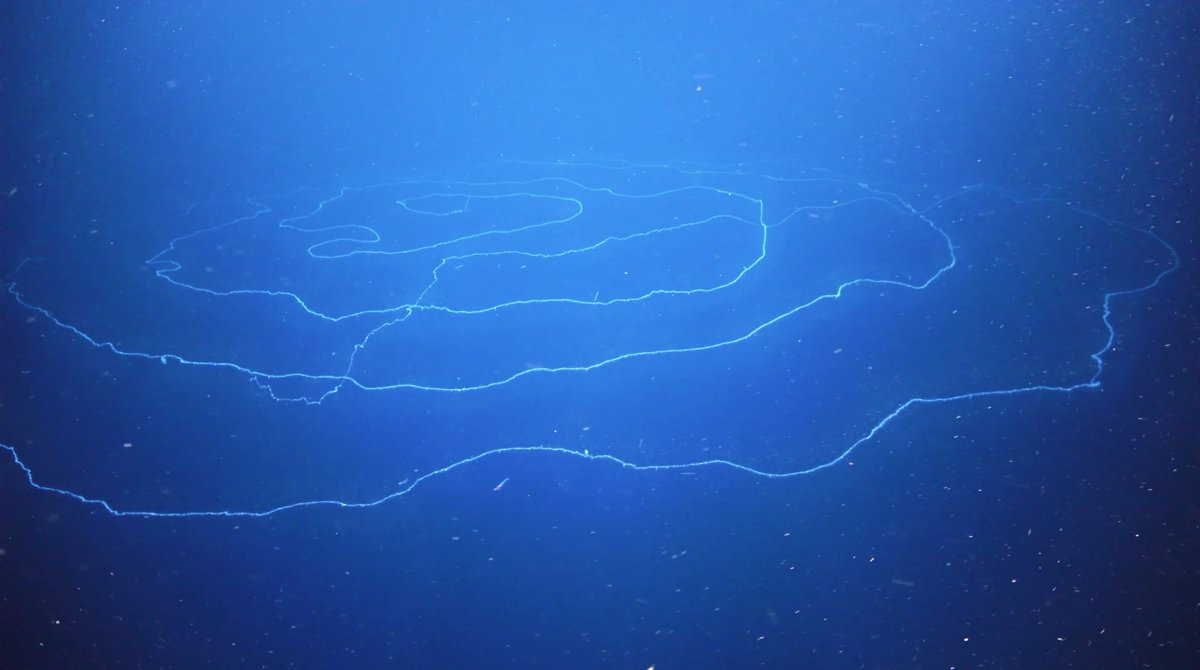 : @SchmidtOcean" title="DAY 31: If you& #39;ve been living under a rock for 2 weeks, a cruise studying Ningaloo Canyons #deepsea off W. Australia, came across THE LONGEST ANIMAL EVER! Recorded at ~600m, this beautiful siphonophore, Apolemia, is 45m long & is actually a colony of many zooidshttps://abs.twimg.com/emoji/v2/... draggable="false" alt="🎥" title="Movie camera" aria-label="Emoji: Movie camera">: @SchmidtOcean" class="img-responsive" style="max-width:100%;"/>
: @SchmidtOcean" title="DAY 31: If you& #39;ve been living under a rock for 2 weeks, a cruise studying Ningaloo Canyons #deepsea off W. Australia, came across THE LONGEST ANIMAL EVER! Recorded at ~600m, this beautiful siphonophore, Apolemia, is 45m long & is actually a colony of many zooidshttps://abs.twimg.com/emoji/v2/... draggable="false" alt="🎥" title="Movie camera" aria-label="Emoji: Movie camera">: @SchmidtOcean" class="img-responsive" style="max-width:100%;"/>
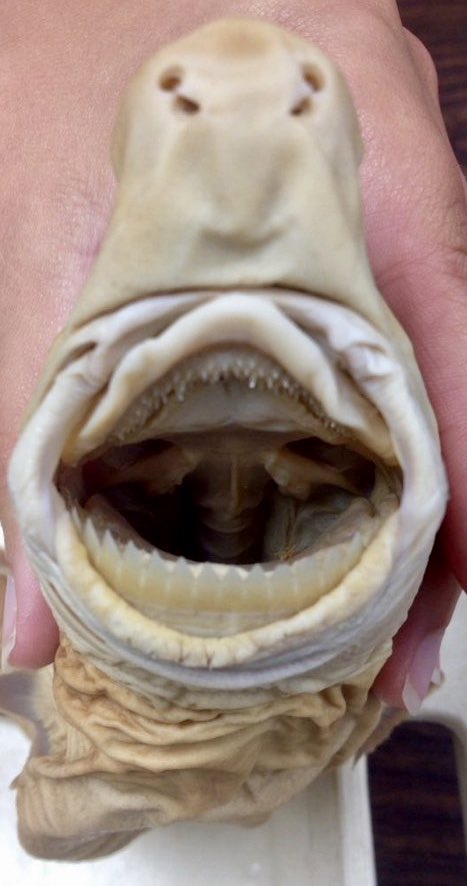 : pomfret)-migrates to/from #deepsea daily" title="DAY 32: The cookiecutter #shark (Isistius brasiliensis)-named for perfect 5cm bites on large victims-leaves wound but doesnt kill-attacks common: most Hawaii adult spinner dolphins have scars & fish in Honolulu Fish Auction bitten (https://abs.twimg.com/emoji/v2/... draggable="false" alt="📷" title="Camera" aria-label="Emoji: Camera">: pomfret)-migrates to/from #deepsea daily">
: pomfret)-migrates to/from #deepsea daily" title="DAY 32: The cookiecutter #shark (Isistius brasiliensis)-named for perfect 5cm bites on large victims-leaves wound but doesnt kill-attacks common: most Hawaii adult spinner dolphins have scars & fish in Honolulu Fish Auction bitten (https://abs.twimg.com/emoji/v2/... draggable="false" alt="📷" title="Camera" aria-label="Emoji: Camera">: pomfret)-migrates to/from #deepsea daily">
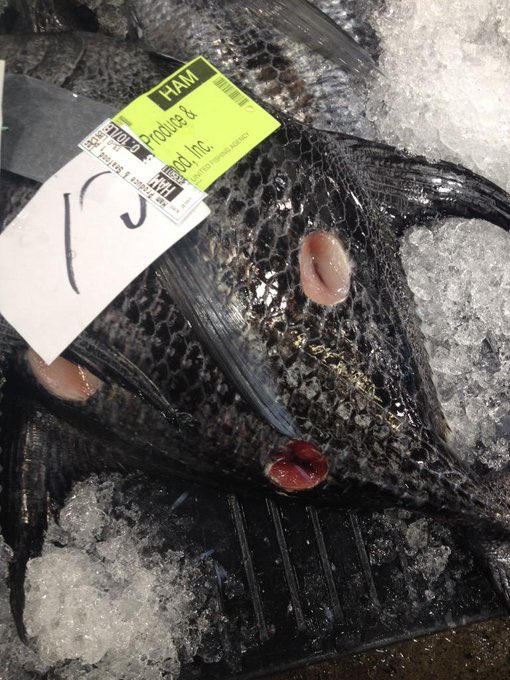 : pomfret)-migrates to/from #deepsea daily" title="DAY 32: The cookiecutter #shark (Isistius brasiliensis)-named for perfect 5cm bites on large victims-leaves wound but doesnt kill-attacks common: most Hawaii adult spinner dolphins have scars & fish in Honolulu Fish Auction bitten (https://abs.twimg.com/emoji/v2/... draggable="false" alt="📷" title="Camera" aria-label="Emoji: Camera">: pomfret)-migrates to/from #deepsea daily">
: pomfret)-migrates to/from #deepsea daily" title="DAY 32: The cookiecutter #shark (Isistius brasiliensis)-named for perfect 5cm bites on large victims-leaves wound but doesnt kill-attacks common: most Hawaii adult spinner dolphins have scars & fish in Honolulu Fish Auction bitten (https://abs.twimg.com/emoji/v2/... draggable="false" alt="📷" title="Camera" aria-label="Emoji: Camera">: pomfret)-migrates to/from #deepsea daily">
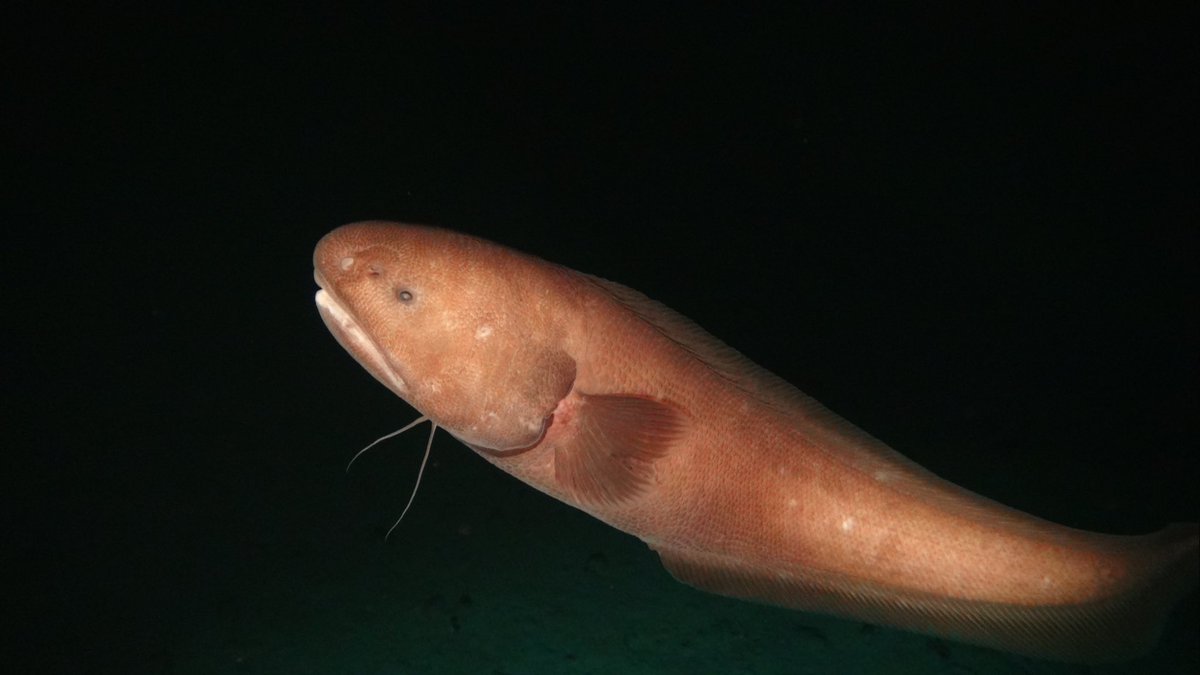
 : @WHOI" title="DAY 39: On #deepsea swordfish: in 1967, the Alvin sub was at 610m off FL when pilots heard a bang. Out porthole, they saw a large fish thrashing about. After aborting dive, they found an 8-foot swordfish wedged below porthole. Took 2hrs to remove but fed entire crew! https://abs.twimg.com/emoji/v2/... draggable="false" alt="📷" title="Camera" aria-label="Emoji: Camera">: @WHOI" class="img-responsive" style="max-width:100%;"/>
: @WHOI" title="DAY 39: On #deepsea swordfish: in 1967, the Alvin sub was at 610m off FL when pilots heard a bang. Out porthole, they saw a large fish thrashing about. After aborting dive, they found an 8-foot swordfish wedged below porthole. Took 2hrs to remove but fed entire crew! https://abs.twimg.com/emoji/v2/... draggable="false" alt="📷" title="Camera" aria-label="Emoji: Camera">: @WHOI" class="img-responsive" style="max-width:100%;"/>
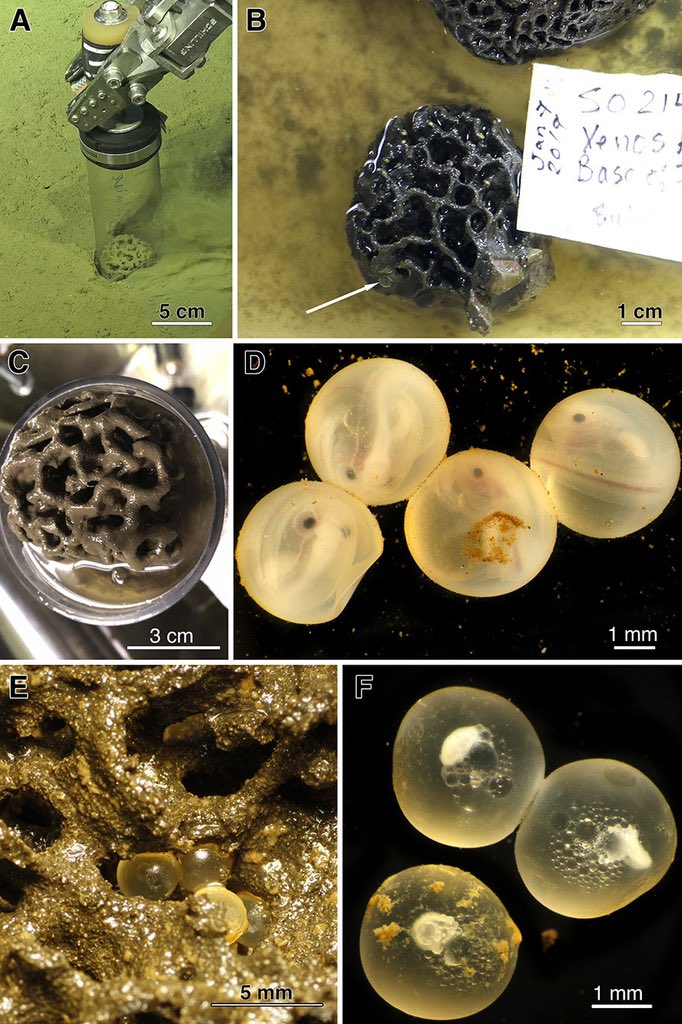 : @LlevinAnn & G Rouse" title="DAY 43: Scientists sampling xenophyophores at 2000m off Costa Rica in 2019 discovered #deepsea snailfish eggs nestled within the intricate structures. Snailfish often store their eggs into other animals: glass sponges, coral stalks & even crab gills!https://abs.twimg.com/emoji/v2/... draggable="false" alt="📷" title="Camera" aria-label="Emoji: Camera">: @LlevinAnn & G Rouse" class="img-responsive" style="max-width:100%;"/>
: @LlevinAnn & G Rouse" title="DAY 43: Scientists sampling xenophyophores at 2000m off Costa Rica in 2019 discovered #deepsea snailfish eggs nestled within the intricate structures. Snailfish often store their eggs into other animals: glass sponges, coral stalks & even crab gills!https://abs.twimg.com/emoji/v2/... draggable="false" alt="📷" title="Camera" aria-label="Emoji: Camera">: @LlevinAnn & G Rouse" class="img-responsive" style="max-width:100%;"/>


